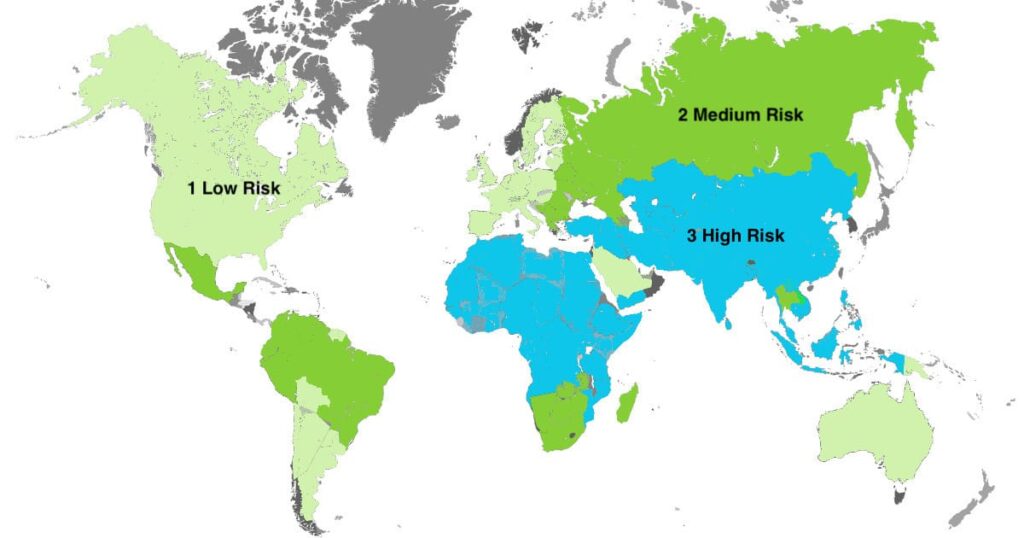
Rabies
Rabies is a viral disease transmitted to humans usually by a bite or scratch from an infected animal (usually a dog). The virus attacks the central nervous system causing, progressive damage to the brain and spinal cord. Once symptoms are present, rabies is almost always fatal.
All mammals are susceptible to the virus including skunks, jackals, mongooses, foxes and raccoons, dogs, cats, monkeys, and bats. Travellers are advised to avoid contact with animals in infected areas.
It is common throughout the world and you should consider it if you are travelling to countries such as Brazil, India, or Thailand where street dogs and bats are common. Rabies is pretty much untreatable and once the clinical signs of rabies appear, the disease is nearly always fatal.
High-Risk Areas
Rabies occurs worldwide. Over 15 million people are exposed to potentially rabid animals annually with approximately 40,000 to 70,000 deaths every year. Low-risk areas include mainland Europe and the UK, Australia, North America, and Japan; travelling almost anywhere else in the world carries some level of risk of exposure to Rabies. Dogs account for the majority of human deaths, with most of these occurring in the South East, East and Central Asia, Africa, and the Indian subcontinent. Bats cause most human Rabies deaths in the USA and Canada and have recently begun to emerge as a health threat in Western Europe, South and Central America, and Australia.

Signs and Symptoms
The first symptoms of Rabies are usually similar to the flu, including fever and headaches. There may also be pain in the area of the bite, developing within days, into symptoms of anxiety, confusion, and agitation. As the disease progresses further, the person may experience delirium, abnormal behaviour, hallucinations, and insomnia.
Once the clinical signs of rabies appear, the disease is nearly always fatal. Treatment is typically limited to supportive care.
Prevention/Vaccine
Vaccination is recommended for all travellers who will be living or travelling in endemic areas and who may be exposed to rabies because of their travel activities i.e. trekking, working, or living in rural areas.
A course of three doses of the Rabies vaccine (Rabipur) is required for protection. The second dose is given seven days after the first. The third dose is given 21 or 28 days after the first.
Vaccination should be completed before your departure to allow your body to develop full immunity. Booster doses are usually only recommended for people at high risk of Rabies (such as vets).
In the event of possible exposure to Rabies, urgent medical attention should be sought, even in those who have received pre-exposure vaccines.

With access to
24 Hour
Emergency
Assistance
A small river named Duden flows by their place and supplies it with the necessary regavelialia. It is a paradise.
Service Recipient Says

Oxmox advised her not to do so, because there were thousands of bad Commas, wild Question Marks and devious.
Kolis Muller NY Citizen
Oxmox advised her not to do so, because there were thousands of bad Commas, wild Question Marks and devious.
Kolis Muller NY Citizen











Oxmox advised her not to do so, because there were thousands of bad Commas, wild Question Marks and devious.
Kolis Muller NY Citizen